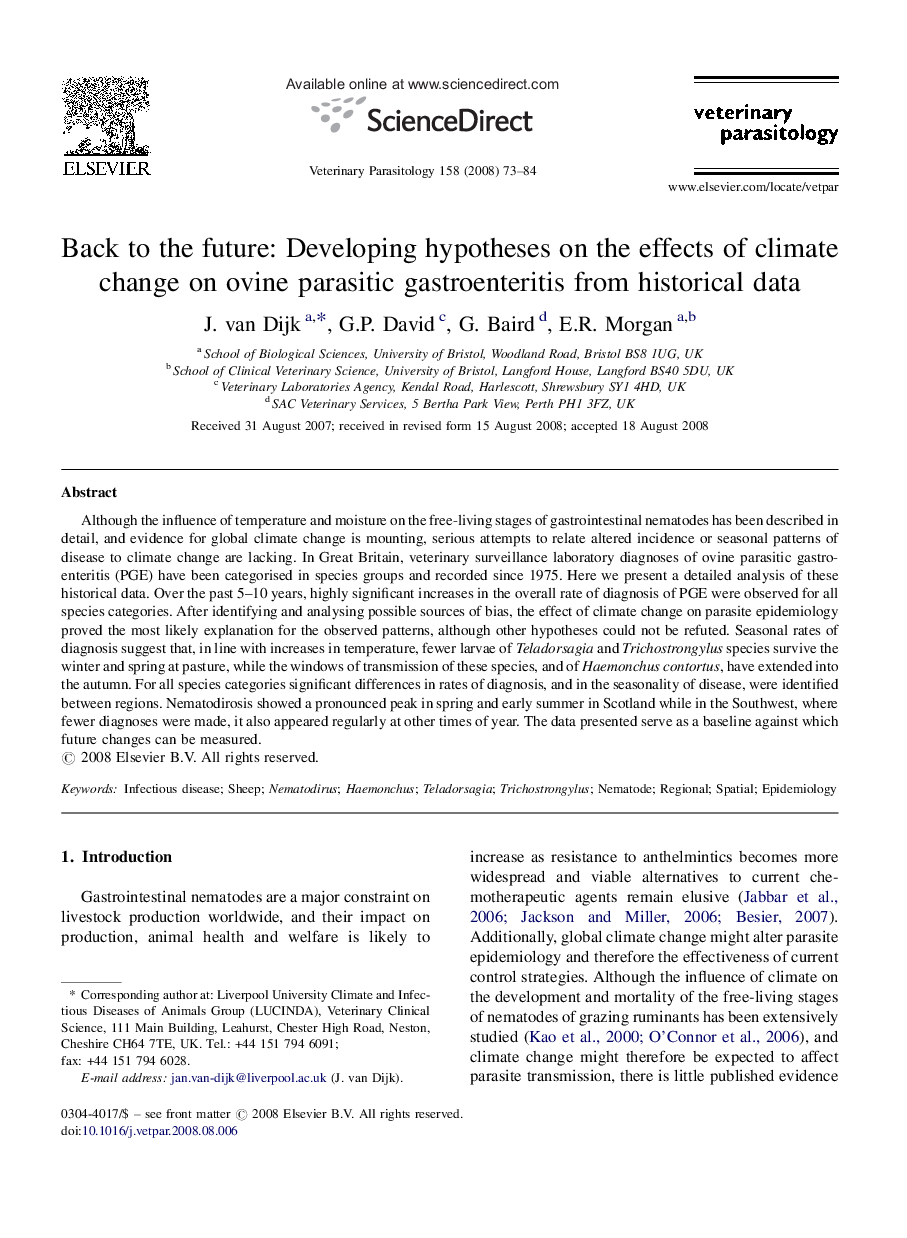| Article ID | Journal | Published Year | Pages | File Type |
|---|---|---|---|---|
| 2471281 | Veterinary Parasitology | 2008 | 12 Pages |
Although the influence of temperature and moisture on the free-living stages of gastrointestinal nematodes has been described in detail, and evidence for global climate change is mounting, serious attempts to relate altered incidence or seasonal patterns of disease to climate change are lacking. In Great Britain, veterinary surveillance laboratory diagnoses of ovine parasitic gastroenteritis (PGE) have been categorised in species groups and recorded since 1975. Here we present a detailed analysis of these historical data. Over the past 5–10 years, highly significant increases in the overall rate of diagnosis of PGE were observed for all species categories. After identifying and analysing possible sources of bias, the effect of climate change on parasite epidemiology proved the most likely explanation for the observed patterns, although other hypotheses could not be refuted. Seasonal rates of diagnosis suggest that, in line with increases in temperature, fewer larvae of Teladorsagia and Trichostrongylus species survive the winter and spring at pasture, while the windows of transmission of these species, and of Haemonchus contortus, have extended into the autumn. For all species categories significant differences in rates of diagnosis, and in the seasonality of disease, were identified between regions. Nematodirosis showed a pronounced peak in spring and early summer in Scotland while in the Southwest, where fewer diagnoses were made, it also appeared regularly at other times of year. The data presented serve as a baseline against which future changes can be measured.
